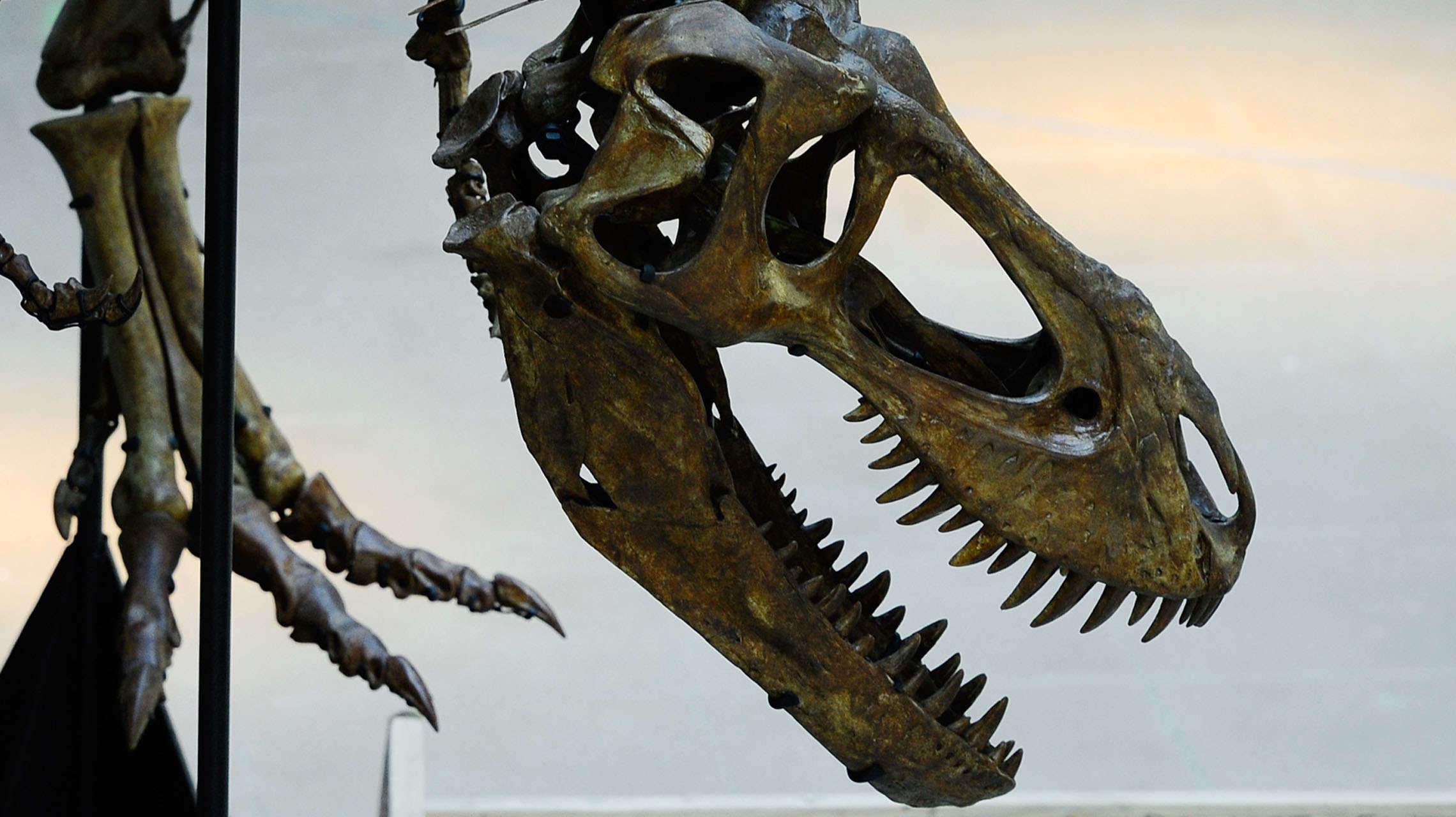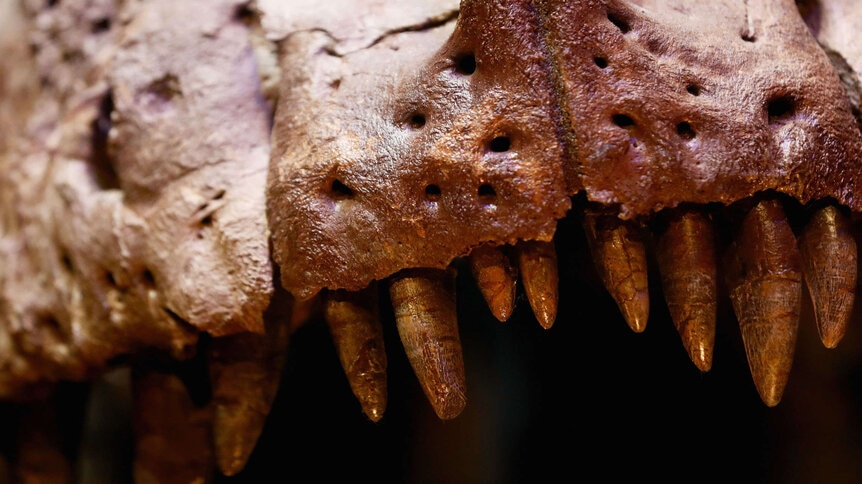Create a free profile to get unlimited access to exclusive videos, sweepstakes, and more!
T-rexes in their terrible teens already had a bite like a mouthful of knives

From high school cliques you can’t sit with to bullying, body-shaming and everything-shaming, teens can be vicious, but those of the human persuasion still have nothing on a teenage Tyrannosaurus rex.
T.rexes ripped through their terrible teens with the scimitars in their mouths. Their teeth were literal knives in their adolescent years—training for when they would eventually grow to be thicker and more rounded to crush bone. Tearing through flesh was a much easier way to grab for juveniles that hadn’t yet developed all the jaw power of an adult. These teen theropods were actually so different from adults that paleontologist Jack Tseng of UC Berkeley believes they had their own ecological niche as predators.
Though they didn’t have the jaws they would by the time they reached legal age, Tseng, who co-authored a study recently published in PeerJ, found that juvenile T.rexes had a bite force more powerful than previously assumed, even if they couldn't yet compete with their parents.
“Bite force is an important characteristic for estimating the sizes of prey or food items living and extinct jawed animals could consume or hunt down,” Tseng told SYFY WIRE in an interview. “This is a way to understand the physical limitations of jaws. It gives us a better idea about ancient food webs when we lack information about direct predator-prey or predator-predator interactions.”
Even the spawn of food chain royalty needed to survive. Being in another niche from their monstrous elders actually could have worked in their favor, since there was a limit to the size of prey they could take down, so they didn’t have to fight with something larger and more terrifying than they were. Not that they went hungry. They were initially thought to have a maximum bite force of about 900 pounds, and Tseng’s research has upped that number to nearly 1,350 pounds. Human jaws can only exert up to 67 pounds of force. Teens were beaten out by the adults, which were capable of chomping down on unfortunate sauropods with nearly 8,000 pounds of force.
“Our study differed from most other research on tyrannosaur bite force because we focused on recreating puncture marks recorded in fossils,” Tseng said. “The bite forces we estimated for juvenile tyrannosaurs were hyena-like.”
To figure that out, he and fellow paleontologist and study coauthor Joseph Peterson created a metal replica of one of those teeth, based on that of a 13-year-old T.rex, and tried to replicate bite marks found on the fossilized bones of other dinosaurs. It took test after test on a mechanical testing frame to replicate the shape and depth of those marks on a cow’s leg bone. The marks on the fossils also suggested that the adolescents were trying to boost the power of their bite as they went through their growing pains.
Jurassic Park got many things wrong. Among them was the T.rex thundering after that van in the rain, because in actuality, a dinosaur of that size would have probably struggled to drag itself around in a parking lot, if it was terrestrial at all. There has been recent controversial research that sees it more as an enormous crocodile that had a semi-aquatic existence. The younger, lighter, swifter teens may have been able to chase things where adults could no longer roam.
Whatever was snapped up in their jaws was unlikely to escape once stabbed with those teeth. It is possible that juveniles not only hunted, but took advantage of kills the grown-up crowd couldn’t quite finish off by scavenging. There was also another way that teen terrors could have handled prey that fought back or proved to be too much of a mouthful. If T.rexes really were like crocodilians on steroids, they might have been capable of the dreaded death roll, or merciless twisting motions that would tear off chunks of flesh. Tseng is skeptical, but he isn’t counting it out.
“I would not exclude the death roll as a possible behavior within a larger repertoire of predatory strategies used by them,” he said. “One way to get more answers would be to study death roll behavior in living predators and relate that to how their skeletons are shaped to perform such a task; we can then examine fossil bones to see if some extinct predators had skeletons capable of such behavior.”
If you ever sneaked into a bar or club when you were a teen, imagine the bouncer making you open your mouth to show proof of age. No fake I.D. would have gotten you out of that.















